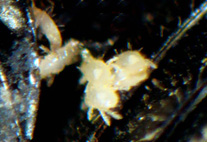Abstract
A number of changes to the status of genus group names in water mites are proposed to foster a more consistent and phylogenetically defensible approach to the ranking of taxa at this level of the classification. The water mite taxa Acercopsis Viets, 1926 (Pionidae: Tiphyinae), Madawaska Habeeb, 1954 (Pionidae: Foreliinae), Brachypodopsis Piersig, 1903, Cubanaxonopsis Orghidan & Gruia, 1981, Hexaxonopsis Viets, 1926, Paraxonopsis Motaş & Tanasachi, 1947, Vicinaxonopsis Cook, 1974, Parabrachypoda Viets, 1929, and Ocybrachypoda Cook, 1974 (Aturidae: Axonopsinae), Ameribrachypoda Smith, 1991 (Aturidae: Aturinae), and Allomideopsis Smith, 1990 (Nudomideopsidae) are elevated in rank from subgenera to full genera to reflect current knowledge of their species diversity, morphological distinctness, relationships and apparent age. In light of the above changes in the subfamily Axonopsinae, the subgenera Kalobrachypoda Viets, 1929 and Navinaxonopsis Cook, 1967 are transferred from the genus Axonopsis to the genus Brachypodopsis, the subgenus Plesiobrachypoda Viets, 1942 is transferred from the genus Axonopsis to the genus Hexaxonopsis, and the species formerly placed in the subgenus Hemibrachypoda Viets, 1937 are transferred from the genus Brachypoda to the genus Parabrachypoda Viets, 1929, and Hemibrachypoda is placed in synonymy with Parabrachypoda. The family group taxa to which all of these genera belong are reviewed to provide context for the proposed changes.

